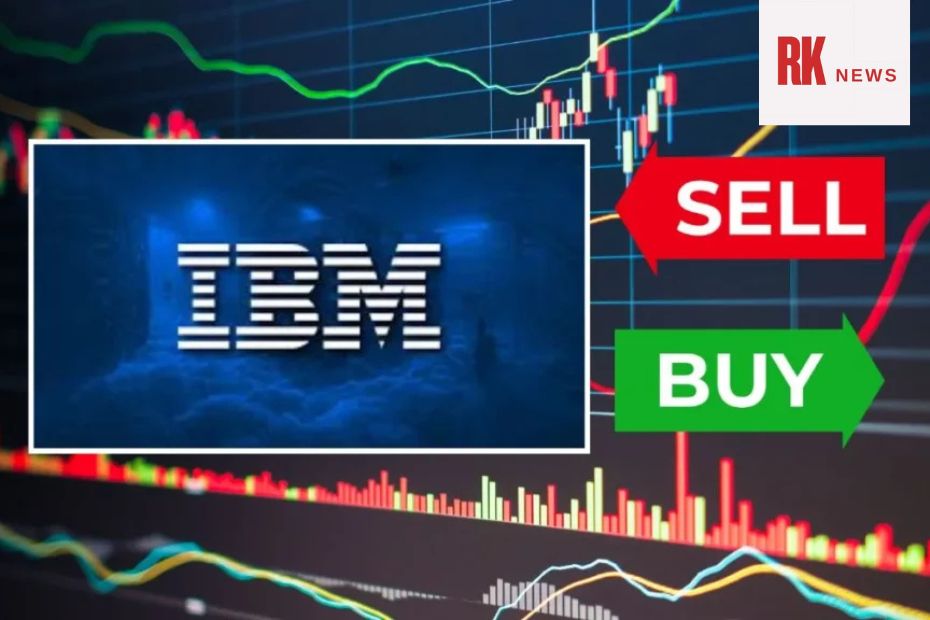New York, NY — IBM (NYSE: IBM) delivered better-than-expected first-quarter results, but investor reaction turned sour as macroeconomic pressures, government spending cuts, and cautious guidance weighed on sentiment.
Shares of the tech giant fell over 6.75% in premarket trading after reporting Q1 earnings, despite surpassing Wall Street estimates on both revenue and earnings per share.
IBM reported earnings of $1.60 per share, exceeding analysts’ expectations of $1.42. Revenue came in at $14.54 billion, also ahead of the $14.41 billion consensus.
The strong performance was led by IBM’s software division, which grew 9% year-over-year when adjusted for currency fluctuations, driven by robust demand for generative AI solutions and Red Hat’s continued momentum. The company also posted record free cash flow of $2 billion, reflecting strong operational efficiency.
However, the positive numbers were quickly overshadowed by a wave of cautious headlines. Investment firm Oppenheimer downgraded its IBM price target from $320 to $290, citing broader market multiple contractions that are dampening valuations across the tech sector.
Although Oppenheimer reaffirmed its Outperform rating, the lowered target added to investor unease. IBM’s stock, which had closed at $245.48 before the announcement, began slipping in premarket trading and was down to $228.90 by early Thursday.
Adding further pressure, IBM revealed that 15 U.S. government contracts, worth an estimated $100 million, were either paused or canceled due to spending cuts by the newly formed Department of Government Efficiency (DOGE), an initiative championed by Elon Musk under the Trump administration.
While federal contracts represent less than 5% of IBM’s total revenue, the disruption highlighted the company’s vulnerability to discretionary government spending. CFO James Kavanaugh acknowledged that the consulting unit, in particular, had become “more susceptible to DOGE-related initiatives,” causing concern among investors.
Despite these setbacks, IBM offered a rare second-quarter guidance to help calm market jitters. For Q2 2025, the company expects revenue between $16.4 billion and $16.75 billion, slightly above analyst estimates of $16.33 billion.
Kavanaugh said the decision to provide guidance was rooted in a desire to offer transparency amid an “unprecedented dynamic of uncertainty” in the market. CEO Arvind Krishna emphasized the company’s ongoing strength in software and AI, stating that IBM’s generative AI business has grown to over $6 billion in total bookings, including more than $1 billion added in the first quarter alone.
Looking ahead, IBM is maintaining its full-year revenue growth outlook of over 5% and reaffirming its free cash flow target of approximately $13.5 billion. The company also continues to invest in its hybrid cloud and AI strategy, recently completing the acquisitions of HashiCorp and AST to strengthen its position in the enterprise tech landscape.
While the infrastructure segment saw a 4% drop due to the end of the Z16 product cycle, IBM is banking on the upcoming Z17 launch, cross-selling with HashiCorp, and a rebound in Red Hat sales to lift second-half performance.
Analysts remain divided on IBM’s trajectory. While its financials show resilience—with a gross profit margin of 56.65% and a long-standing record of consistent dividends—the near-term headwinds from government spending cuts and macroeconomic uncertainty are undeniable. Still, with a dividend yield of 2.72% and a solid track record, IBM continues to be seen as a reliable play in turbulent markets.
For investors tracking IBM stock, the recent volatility underscores the importance of watching macro policy changes and tech sector valuations closely. As the company navigates this complex landscape, its performance in the second half of 2025 will be key to restoring investor confidence and potentially reclaiming lost ground.
